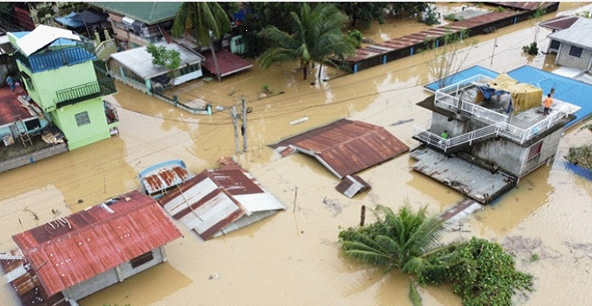STORM-weary Filipinos have started clearing fallen trees and repairing damaged houses after Super Typhoon Man-yi, the sixth major storm to hit the Philippines in less than a month, battered the country and left at least eight people dead.
Man-yi significantly weakened into a severe tropical storm before making its way out about noon (04:00 GMT) yesterday.
According to the disaster management agency in the northern province of Nueva Ecija, rain brought about by Man-yi triggered a landslide, killing seven people and injuring three others.
In the eastern province of Camarines Norte, an elderly man was killed after his motorbike was caught in a power line during the storm. The national weather service PAGASA had warned of a “potentially catastrophic” consequence from Man-yi. But the early evacuation and less-than-expected volume of rain softened its effect.
Yesterday President Ferdinand Marcos said Man-yi’s aftermath “wasn’t as bad as we feared”.
Packing maximum sustained wind speeds of up to 185 km/h (115 mph) at its peak on Saturday, Man-yi slammed into the island province of Catanduanes before making a second landfall in the northern province of Aurora.
Along its path, Man-yi uprooted trees, brought down power lines, crushed wooden houses, and triggered tidal surge, landslides and flooding. In the northern province of Isabela, flooding submerged part of the city of Ilagan.
Power outages across Catanduanes could last for months, provincial information officer Camille Gianan told the news agency. “Most houses with light materials were flattened while some houses made of concrete had their roofs, doors and windows destroyed.”


